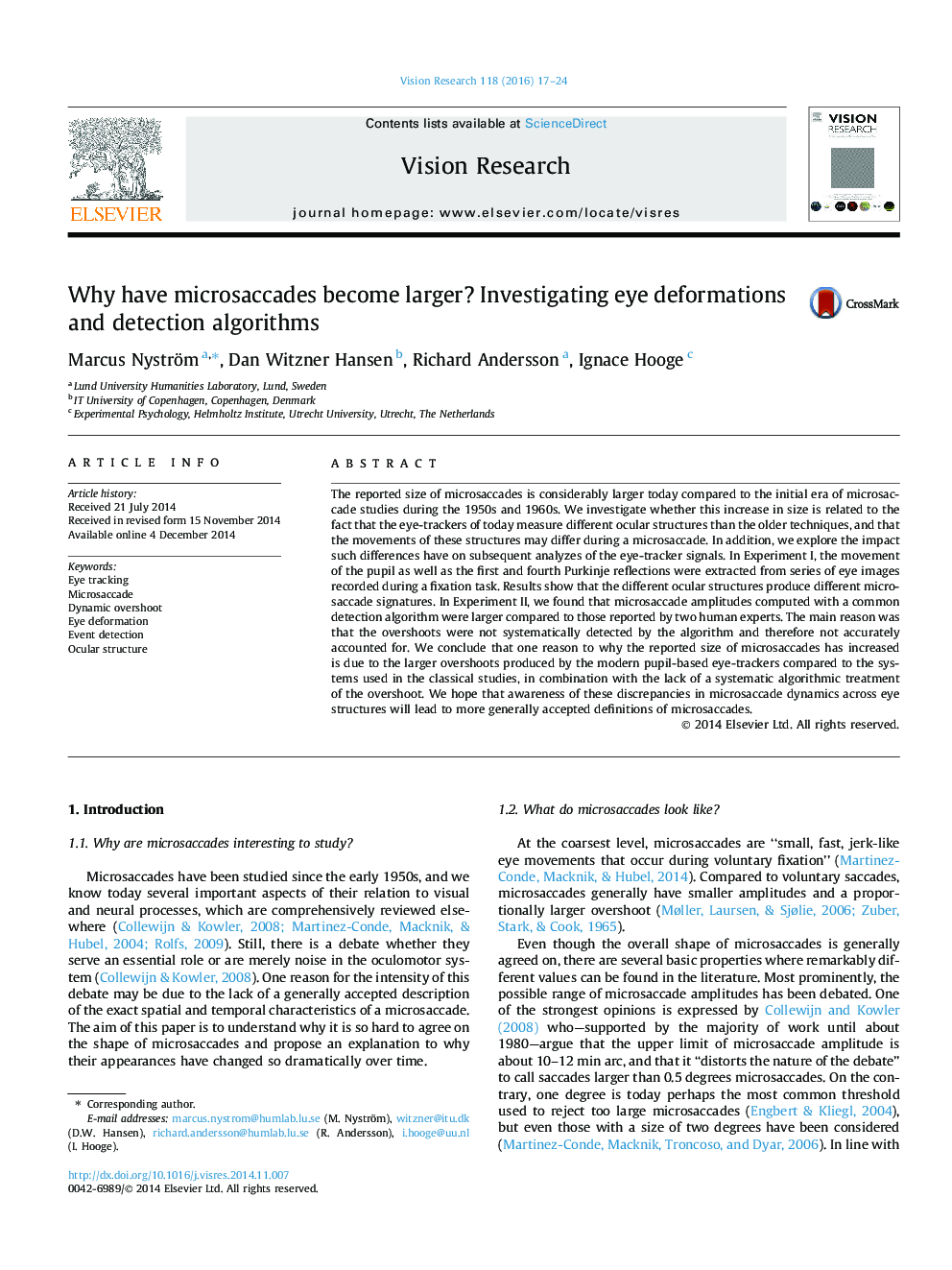| Article ID | Journal | Published Year | Pages | File Type |
|---|---|---|---|---|
| 4033577 | Vision Research | 2016 | 8 Pages |
•The reported size of microsaccades has become larger over the past decades. Why?•The lens, pupil, and eyeball do not move rigidly during a microsaccade.•A common algorithm for microsaccade detection overestimates the amplitude.•The results can account for part of the historical increase in microsaccade amplitude.
The reported size of microsaccades is considerably larger today compared to the initial era of microsaccade studies during the 1950s and 1960s. We investigate whether this increase in size is related to the fact that the eye-trackers of today measure different ocular structures than the older techniques, and that the movements of these structures may differ during a microsaccade. In addition, we explore the impact such differences have on subsequent analyzes of the eye-tracker signals. In Experiment I, the movement of the pupil as well as the first and fourth Purkinje reflections were extracted from series of eye images recorded during a fixation task. Results show that the different ocular structures produce different microsaccade signatures. In Experiment II, we found that microsaccade amplitudes computed with a common detection algorithm were larger compared to those reported by two human experts. The main reason was that the overshoots were not systematically detected by the algorithm and therefore not accurately accounted for. We conclude that one reason to why the reported size of microsaccades has increased is due to the larger overshoots produced by the modern pupil-based eye-trackers compared to the systems used in the classical studies, in combination with the lack of a systematic algorithmic treatment of the overshoot. We hope that awareness of these discrepancies in microsaccade dynamics across eye structures will lead to more generally accepted definitions of microsaccades.
